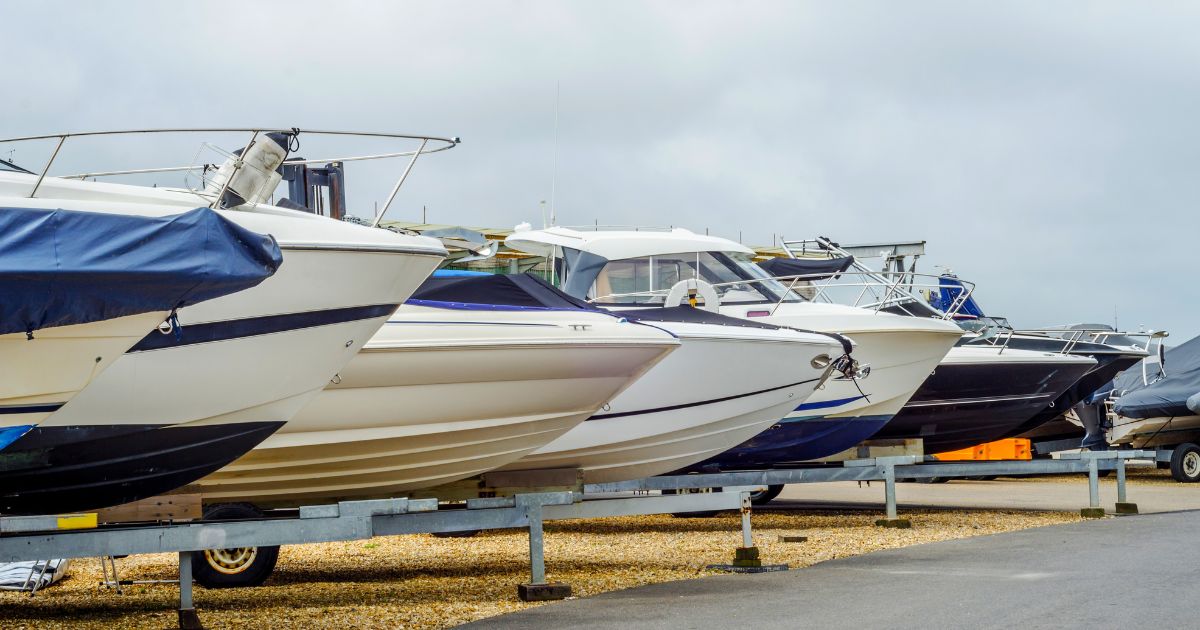Keep your vessel safely stored until your next venture. Learn the difference between wet and dry boat storage and how they affect your boat-owning experience.

Owning a boat opens the door to many different opportunities, from fishing excursions to sunset cruising. However, it’s not fun and games all the time. Like cars, boats require you to invest your time and money to ensure your ride stays in top shape.
The boat storage method you choose affects the quality of your yacht. The best storage solution ideally protects your vehicle from various external influences, minimizing wear and tear. There are many different ways to “park” and store your boat, including on-land and in-water solutions. Here are the differences between wet and dry boat storage options and their benefits.
Wet Storage: On the Water
Wet boat storage refers to storing your boat in the water, usually in a harbor. This option provides easy water access, doesn’t require any towing or transportation mechanics, and costs less than renting a spot on land. There are two main types of wet storage: docking and mooring.
Docking Options
Docking a boat is equivalent to parking a car in the parking lot. This option involves tying your yacht to a dock to secure it as it sits on the water. You will steer your vessel parallel to the dock and use heavy-duty ropes or dock lines to fasten your boat to the dock’s structure.
Mooring and Anchoring
Mooring is one of the many reasons why yachts come paired with dinghies. They allow you to store your boat offshore with no ties to land, ensuring you can store your boat along coasts that lack a marina or harbor. This option requires you to drop the anchor and fasten your vessel to a buoy for added security. After anchoring, you need another boat to reach land.
Dry Storage: On Land
Dry storage means storing your vessel on land, whether indoors or outdoors. There are many ways to store your boat on land, from reserving a spot at a marina’s boatyard to bringing the boat back to your home. This process involves a lot more effort and can cost money. However, keeping your boat off the water reduces degradation from salt water.
Outdoor Parking
Outdoor dry storage comes in many forms. The most common outdoor storage method is parking your boat on a launching trailer and parking it at a boatyard, tent, or driveway. In some places, during the off-season, commercial parking lots transform into temporary boatyards.
Indoor Placement
Indoor dry storage, like dry stacking—storing your boat off the ground in a shed—provides the safest way to store your yacht. The structure protects your boat from poor weather and other external factors. Plus, these places typically have an attendant that keeps an eye on your vessel. Some owners store their boats in their garages to avoid storage fees.
Wet vs. Dry
Dry and wet boat storage differ in many ways. One involves leaving your boat in the water, while the other means heading back to land. They provide varying protection coverage, accessibility ease, fees, and more. Knowing the different options to properly store your vessel ensures you find the best way to care for your yacht and enhance your boat-owning experience.





